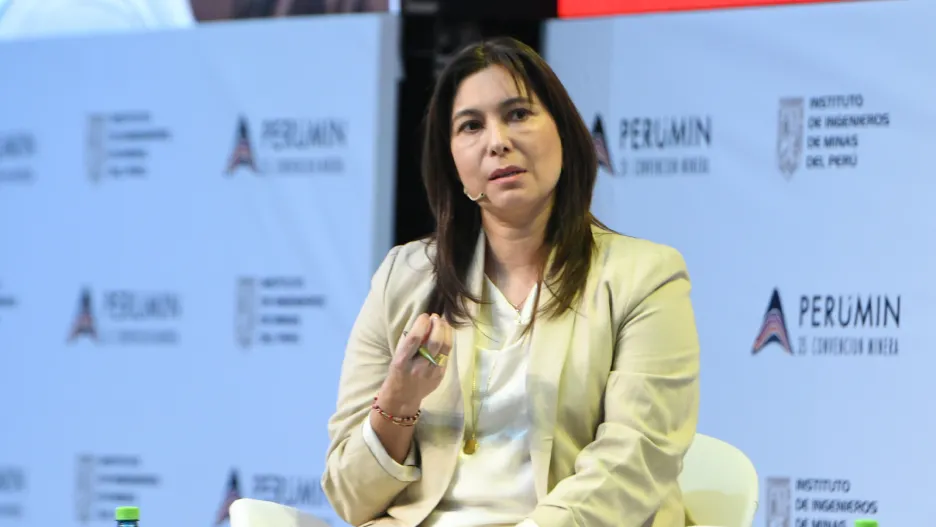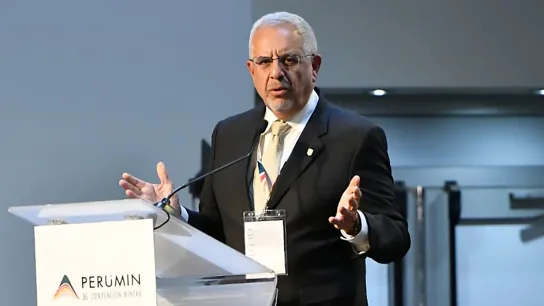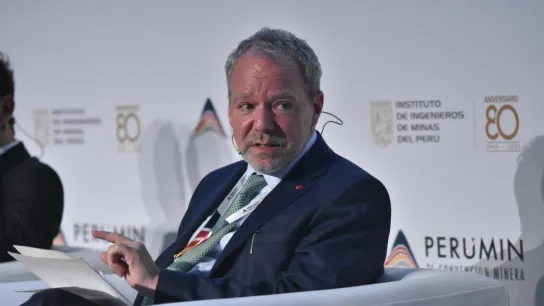The International Meeting Will Bring Together Professionals from Eight Countries to Analyze the Advancements and Challenges of the Global Mining Industry
Arequipa,

- It will also address Peru’s position as a mining country and the opportunities this offers.
In an interview with the Peruvian Institute of Mining Engineers (IIMP), Angela Grossheim, president of the International Meeting of PERUMIN 36, shares with us the innovations that the Meeting will present this year and the distinguished guests who will attend. She also discusses the main challenges facing our country in developing its mining industry and how learning about the positive experiences of other countries will be highly beneficial.
What is the purpose of the International Meeting?
The International Meeting is a platform for the mining ecosystem to exchange experiences, not only pertaining to Peru, but also the world. It provides a space to share how different countries are working, what trends are emerging, and what is being done in other countries. Therefore, it is highly interesting to organize this event with countries that have mining sectors, as they can contribute to enriching the academic program. We have developed this program in collaboration with representatives from Germany, Australia, Canada, the United Kingdom, and Switzerland precisely because their insights greatly assist us in comprehending mining trends and challenges, which are often global.
What are the new features of the International Meeting this year?
This year, the program is built around two main pillars: global mining trends related to innovation, on the first day, and sustainability on the second day.
On the first day, we will address topics concerning critical minerals like lithium, the circular economy, and opportunities for working with green hydrogen, given our natural resource wealth.
What do you have planned for the second day?
As mentioned, the second day is centered on sustainability. During the first segment, we will focus on territorial development. We will have a presentation by Milton Von Hesse regarding the challenges our country faces in bridging social gaps, what we are doing as a country, and how we can go beyond mining activities to create wealth, well-being, and economic activities across national territories with a broad territorial vision.
Afterwards, we will host a panel with representatives from various countries, and there will be a presentation on clusters. Within the mining industry, the supplier network is highly important. It is often said that for every direct mining job, there are eight indirect jobs in the supplier sector. Therefore, we have interesting international experiences to share that can help us figure out what we need to work on and how we can establish clusters that foster innovation and technology development in Peru.
Finally, we will have a segment related to human rights. What is interesting here is that we will present Due Diligence guidelines from both ICMM, an international mining organization, and the OECD. We are also working on guidelines from the National Society of Mining, Petroleum, and Energy (SNMPE), and the business sector's contributions in this area.
It is worth noting that Canada, our partner country, will play a crucial role in this segment. The Canadian Ambassador will share their experiences regarding this topic.
How many countries are participating this year, and how many were there last year?
As I mentioned earlier, the organizing committee of the International Meeting comprises delegations from Peru and five other countries: Germany, Australia, Canada, the United Kingdom, and Switzerland, with whom we have developed the academic and public policy-oriented program. In the program, there are 21 professionals from eight countries: Peru, Canada, Germany, the United Kingdom, Brazil, Colombia, Spain, and Chile.
In the previous edition, a similar number of professionals representing a total of eight countries were also present. On that occasion, participants came from Peru, Australia, the United States, Canada, Colombia, Sweden, Germany, and Brazil.
How do you currently perceive Peru's position among the world's mining countries?
Clearly, Peru is a mining country, internationally recognized as such, and it always strives to align with the best practices. That is why Peruvian companies have such strong ties and collaborates closely with other mining countries. However, Peru also needs to compete to attract investment in this sector, making it imperative for the country to be much more competitive than its peers.
As we can see, in the context of energy transition, our country has a tremendous opportunity to advance mining projects in our portfolio. This is the direction the world is heading, and with over 70% of our portfolio consisting of copper projects, there is a significant opportunity that we should not miss. We need to find ways to unlock their potential.
In what areas do you think Peru faces the greatest challenges and what can it learn from other countries?
In fact, in collaboration with the Peruvian Institute of Mining Engineers (IIMP), in two consecutive PERUMIN events we have analyzed how competitive Peru is compared to other countries. We have analyzed six countries. Peru exhibits certain strengths, but it also has challenges and obstacles to overcome.
One of the challenges is regulatory issues. Peru's regulatory landscape is more complex. This is an area where significant improvements can be made without lowering standards. We need to ensure that processes are reviewed within established timeframes, with timely information and better coordination among various involved entities.
Another challenge is infrastructure. Our country requires more multipurpose infrastructure, particularly because much of mining activity takes place in very remote highland areas. Therefore, the creation of roads or ports can benefit other activities as well. This can greatly help us work with agricultural areas and different ecoregions.
We also face the complex issue of social conflict. We believe that this arises from the social gaps that still exist in the country, which are quite pronounced. Therefore, we must efficiently and timely use our resources, such as the fiscal redistribution (canon) and royalties, to close these gaps, especially in remote areas. We should also create economic activities, not solely tied to mining, to enable these regions to thrive independently.
Regarding best practices in mining sector relations, what experiences will be discussed during the event?
When embarking on mining activities, companies have an obligation to engage with the community and explain the project they plan to undertake in the region. Clearly, a project will change the dynamics of the activities in that area. Additionally, this relationship will continue during the construction and operational phases, so it will be interesting to hear about the experiences of companies engaged in mining activities not only in Peru but also in other parts of the world.
To discuss this issue, the meeting will feature Glen Nolan, who works in Canada; Francisca Rivero, representing Chile; and Mariana Abugattas, representing Moquegua with the Quellaveco project. They will share how they are developing this relationship, how they perceive these improvements, their main concerns, and how to gain the trust of the community in their environment.

